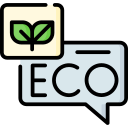Build a Credible Narrative
Map your impacts using a materiality assessment, then lead with the few topics that matter most to stakeholders and enterprise value. Swap vague claims for concrete changes. If it is not material, consider moving it to the appendix rather than the headline.
Build a Credible Narrative
Metrics land when people understand their human relevance. Connect a kilowatt-hour saved to fewer outages in a community clinic, or reduced water use to healthier local rivers. Tie outputs to outcomes, and outcomes to lives improved, to make progress unforgettable.






